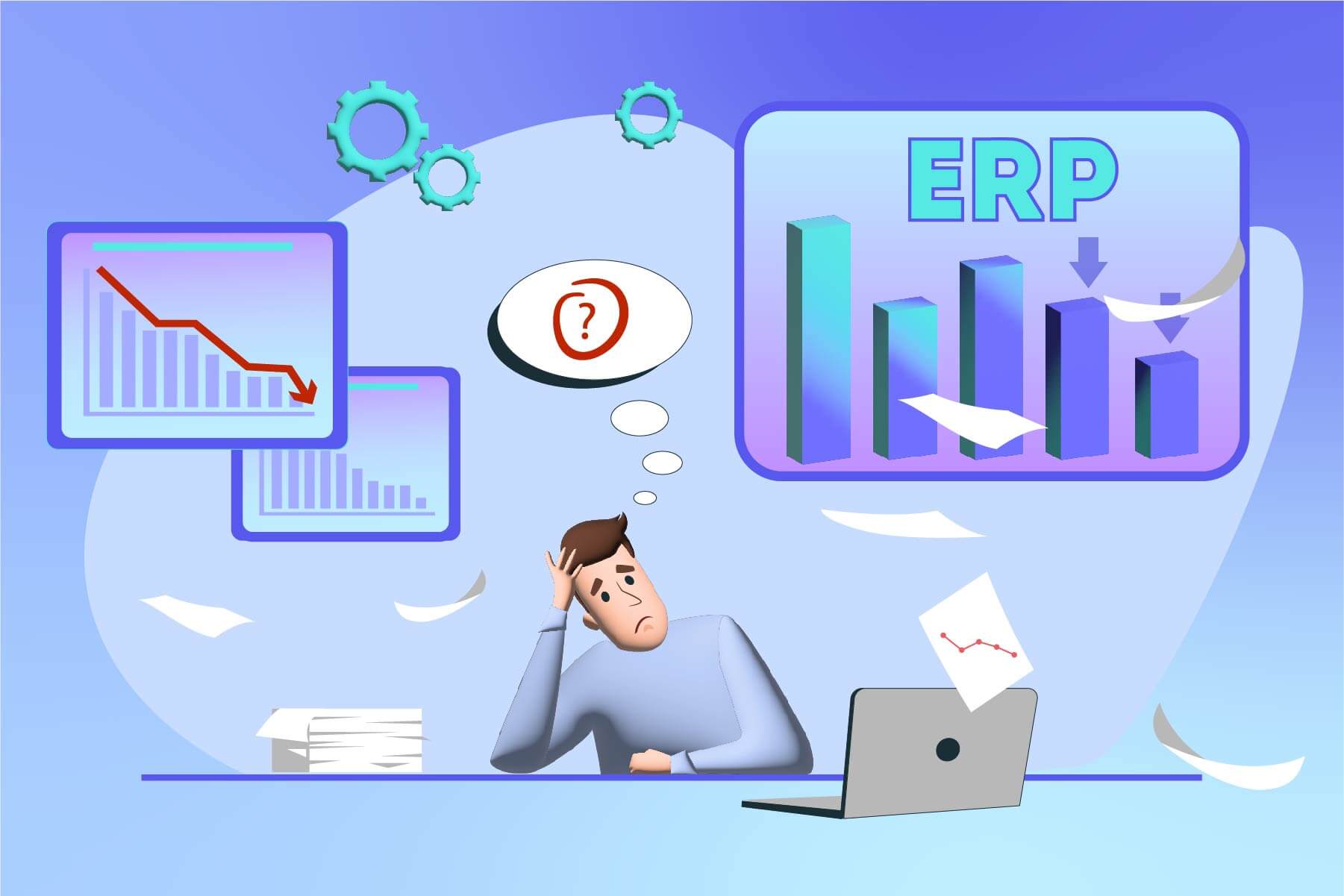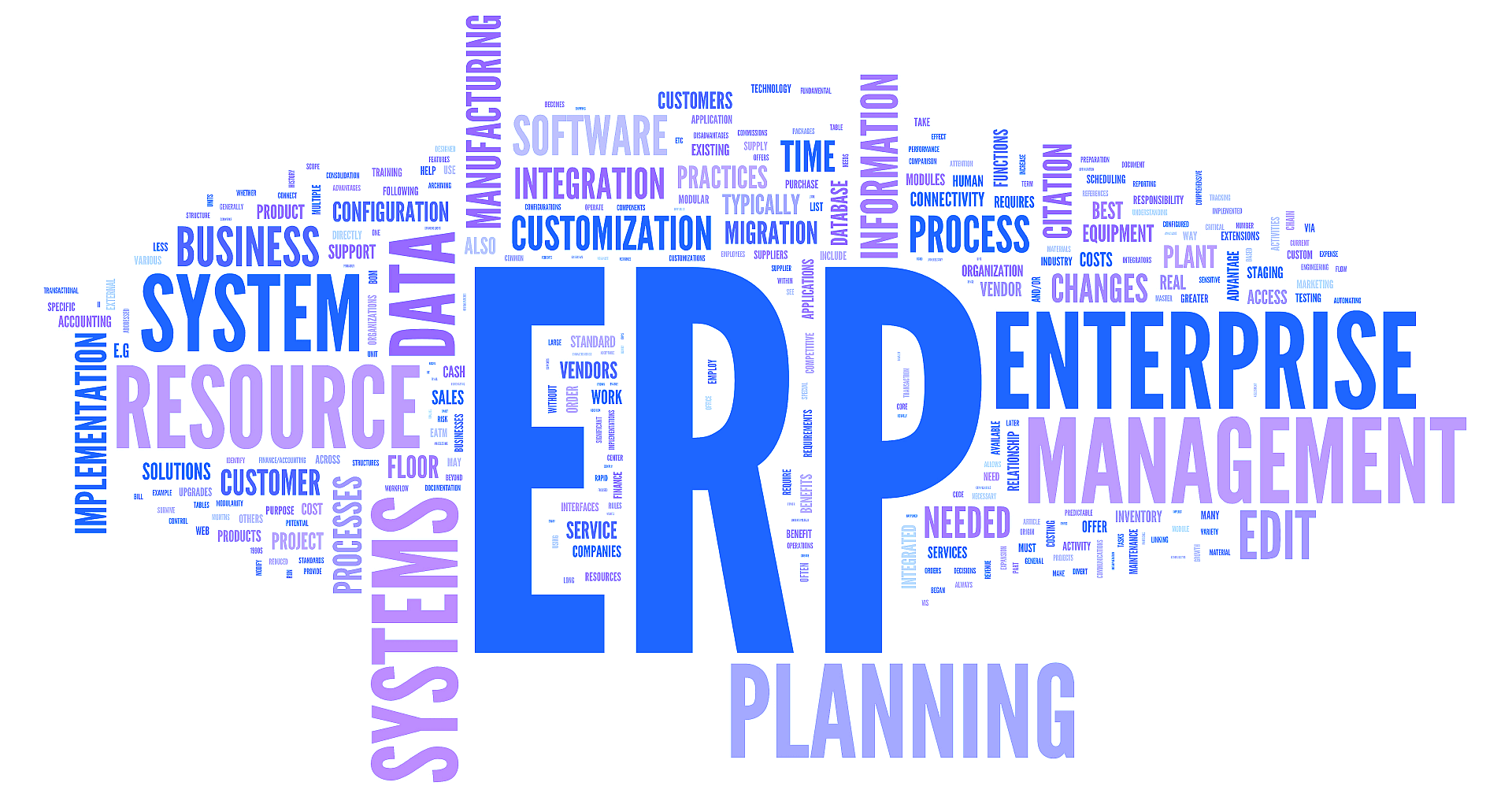You would love to and don’t dare to tackle an ERP project. After all, you’ve heard a lot about it from colleagues or fellow campaigners. Or experienced it yourself. How a seemingly safe project has come to nothing or been driven to the wall. What are the most common reasons for an ERP project to fail? And how can they be prevented?
Appropriate employee and capacity planning
 Some team members may not yet be well enough trained for the role they are to take on, e.g. that of key user. They have to find their way around while all their manpower is already needed in the project.
Some team members may not yet be well enough trained for the role they are to take on, e.g. that of key user. They have to find their way around while all their manpower is already needed in the project.
Rarely is a realistic plan drawn up as to how which colleague is busy with the project and when, so that colleagues do not manage the workload that was planned and therefore the ERP project is delayed.
It is clear to see that the problems listed above put a strain on projects. There are various solutions for this, consisting of:
- Sufficient and realistic planning of personnel and their workload – by someone with a lot of experience in these projects (an outsider therefore often makes sense).
- Training courses held before the ERP project start for well-informed project participants.
- a neutral external project manager to prevent career-driven decisions.
Correct strategy for an ERP project
 Don’t want to invest a lot of money in a new ERP system and then be disappointed with the result?
Don’t want to invest a lot of money in a new ERP system and then be disappointed with the result?
There are two extremes to be observed here: Some need a new ERP system, but cling too tightly to their existing strategy. After all, it is precisely this strategy that makes the company what it is. Others focus too much on the new system, ignore important needs of their company and simply use the standard solutions.
So you pay for something you already have or something you don’t even need.
The result is the same for both: users are dissatisfied and, at best, things are no better, at worst worse than before the changeover.
The solution is …
– … neutrally assess the existing structures
– … respond to the individual requirements of the company
– … impartially assess which adjustments to the standard solution are necessary
– … find the balance of what can be implemented in a controllable way
– … make the effects clear and palatable to the end user
Early planning of training courses
Two main factors must be clarified BEFORE the start of the changeover: Time and money for training.
It takes time to plan training for sometimes 100 users: What role do they play? Who needs training before the project starts in order to advance the progress of the project? For whom is it enough when the end of the project is in sight and who will only be trained after completion? The respective departments should also have enough time to release employees from their daily schedules for the duration of the training. The time required to train employees WELL should also not be underestimated: How much time do you really need to spend on it?
And money: if you don’t plan a budget for training, you are saving at the wrong end. If the key users and future ERP system managers are not or insufficiently trained, the changeover will only progress slowly. And if the end users are not trained to use the system correctly, even the best ERP system is useless. In the worst-case scenario, the system is down for hours on end and pure money is lost.
 What can you do about it? You have to plan early…
What can you do about it? You have to plan early…
– … which employee is to be trained and when.
– … when which roles are trained.
– … how long the training courses should last.
– … how much these training sessions cost.
– … what buffer time is necessary and possible.
Therefore, if you keep an eye on the time and coordination required for training courses at an early stage, you won’t lose any sleep over them.
Error-free master data
Master data. Who doesn’t love it? The problem, however, is that there is either no master data at all, it is stored somewhere and somehow, is outdated or is only rudimentarily maintained. Or that there is no one responsible.
This results in duplications or different versions of the master data. This makes it necessary to sort, check and, if necessary, regenerate the data, which in turn means a lot of work. The key users now have to maintain master data in addition to working on the project. All of this means that project progress is slow.
The bottom line? The quality of the master data is crucial for the success of the ERP project
The solution is to clarify responsibilities, analyze existing master data and find errors and gaps in master data. If necessary, new, high-quality data must be generated and built up.
Proper implementation strategy
 There are two types of system implementation and their consequences when problems arise:
There are two types of system implementation and their consequences when problems arise:
-
- Introduce everything -> paralyze everything = bad
- Partial insertion -> Partial paralysis = better
After all, the new system may have been tested and checked as thoroughly as possible. Unfortunately, reality often harbors other problems than can be considered in theory. These remain even when introducing subsystems in stages. Here, however, there is only the risk of temporarily hindering individual business areas. However, if you introduce everything at once, you can also paralyze everything at once.
ALSO: Think through your implementation strategy carefully!
The right priorities for an ERP project
Responding to change, being flexible, rethinking quickly – the canon this year. And that is justified. You shouldn’t be stubborn and stubbornly go your own way and be proud of your beautiful blinkers.
Despite everything: BE CAREFUL WHEN CHANGING PRIORITIES!!!
After all, it’s usually our priorities and goals that give us guidance through all the changes. And some things simply have to be carried through despite change and upheaval.
In companies, IT projects are often postponed. You can still do it later.
But what does that lead to? Are the consequences really so inconspicuous? Does it really matter when such projects are completed and whether they are completed at all? Unfortunately not. It does matter and the consequences should not be underestimated. Not only is the introduction of the planned project delayed, but the employees also have to be retrained. And that has a pretty demotivating effect on them. As a result, the success of the project is a long time coming, if it happens at all. – What needs to be done?
In any case, don’t pull resources from one project to another overnight – show sensitivity and set priorities in the interests of the company and its employees.
Otherwise, there are individual options for implementing IT projects as quickly and smoothly as possible. This can and must be tailored to your own company.
Professional change process
When it comes to innovations in or to the system, management and employees often talk at cross purposes. There is often a wide gap between what management means and what employees understand.
Why is that the case? Why do employees and management often misunderstand each other? The so-called change component of an ERP project is often or even usually completely underestimated. The ERP project is thoughtlessly placed in the “IT project drawer” and there it remains. Not accessible to anyone. But an enterprise resource planning project challenges the entire organization. After all, completely new processes and workflows are often introduced.
When employees are then faced with completely new roles and tasks, they are overwhelmed and very skeptical. And if you have then also “automated away” certain tasks, then everything is lost anyway.
What should you do? Proper management, coaching and getting the works council on board in good time.
Effective project completion
How do you end things properly? Why is it that in some project meetings only problems and blame are shifted from one person to another?
Because there was no real project CONCLUSION. Because after that it would be clear:
-
- the project was in state XY after completion
- that is still open
- who and who will take care of it by then
Responsibility now lies with the person or department responsible. A “It wasn’t me” or “I don’t know anything” no longer counts. But the success of the project then counts double!

If you would like support with an ERP project, simply fill out the contact form here. We will get back to you as soon as possible.






Leave A Comment